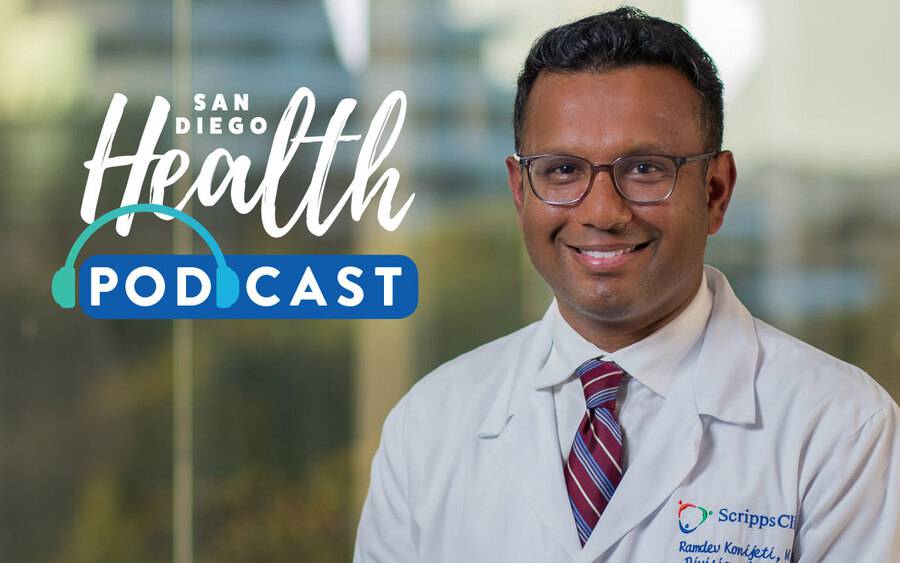Why Are Young Men at Greater Risk for Testicular Cancer? (podcast)
Learn the symptoms and treatments for testicular cancer

Dr. Ramdev Konijeti, Urology, Scripps Clinic
Learn the symptoms and treatments for testicular cancer
One of every 250 males will develop testicular cancer at some point during their lifetime. This form of cancer also tends to strike men at a younger age compared to other cancers.
Fortunately, there is a relatively high cure rate, especially when caught early.
In this episode of San Diego Health, host Susan Taylor and guest Ramdev Konijeti, MD, a urologic oncologist and robotic surgeon with Scripps Cancer Center and Scripps Clinic, discuss the signs, symptoms and treatments for testicular cancer. Topics covered include how treatment affects a patient’s ability to father a child.
Dr. Konijeti stresses awareness and the importance of self-exams. A testicular exam is part of an annual wellness exam, but if men notice a lump between exams, they should contact their physician, he says. Periodic self-exams may be recommended, especially for men who have a higher risk due to an undescended testicle, he adds.
“It’s an easy thing to identify if you regularly check yourself and it’s a very curable disease,” says Dr. Konijeti. “So, there’s a lot of optimism, even if you’re someone who suffers from this.”
Listen to the episode on who is at risk for testicular cancer
Listen to the episode on who is at risk for testicular cancer
Podcast highlights
Watch San Diego Health video on testicular cancer
Watch the San Diego Health video with host Susan Taylor and Dr. Konijeti discussing why testicular cancer affects young men.
Follow San Diego Health on iTunes for the latest episodes on new medical technologies and wellness tips. We’re also on SoundCloud and Spotify.